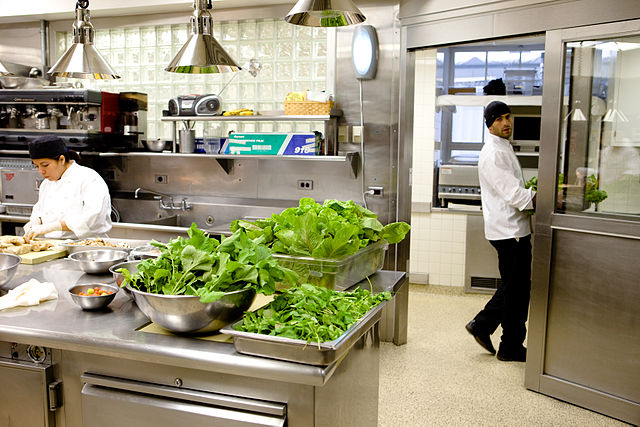Dark kitchens, also known as ghost kitchens, are delivery-only restaurants that don’t have dining areas. These restaurants don’t have to worry about completing a service and having to host customers, so they have become a tempting alternative to those with a vision for a restaurant. Especially thanks to platforms like Deliveroo and UberEats, these kitchens have popped up all over the UK, most prominently in London, taking the culinary scene by storm over the last decade. With more people ordering in, dark kitchens are reshaping how we think about food.
The Origins and Definition of Dark Kitchens
Dark kitchens are exactly what they sound like: kitchens designed solely for preparing food to be delivered straight to the doors of customers. They seem to have emerged as a response to the growing demand for online food delivery, with both established restaurants and brand-new restaurateurs jumping on board. Early adopters in London like Deliveroo Editions were key in popularizing the concept. The goal initially was to allow restaurants to expand their delivery footprint without opening new physical locations.

Key Drivers of Growth
Food delivery apps have been a huge driver for the explosive growth of dark kitchens, with Deliveroo, UberEats, and JustEat leading the charge. As people begin dine out less and turn to convenient, high-quality meals at home, dark kitchens have skyrocketed. The COVID-19 pandemic was a major catalyst, with lockdowns forcing restaurants to pivot to delivery-only models simply to stay afloat. Additionally, dark kitchens come with lower overhead costs—there’s no need for waitstaff, real estate, or any kind of dining room. A dark kitchen is a great means to turn your idea for a restaurant into a lean, mean food-delivering machine.
How Dark Kitchens Benefit Businesses
Dark kitchens offer a revolutionary brand of flexibility for newer businesses. Multiple brands can operate out of the same space, and new concepts can be tested without hefty startup costs. These kitchens also allow companies to expand into new areas without the financial stress of opening traditional brick-and-mortar locations. Access to data from delivery platforms also gives new culinary businesses insight into what dishes sell best, so they can fine-tune their menus and pricing. Whether you’re a small independent food biz or a big chain, dark kitchens provide a buzzing opportunity to reach more customers.
The Challenges and Criticism
While dark kitchens have many upsides, they aren’t without their critics. Some fear they could hurt traditional restaurants, with delivery drivers crowding certain areas and the occasional regulatory challenge. And let’s not forget that some people still crave the dining-out experience, which ghost kitchens simply can’t offer. Not every food business thrives in a delivery-only world.
Conclusion
In the last decade, dark kitchens have become a force to be reckoned with in London and across the UK. While they’ve transformed food delivery, they haven’t entirely replaced the joy of dining out. As we move into a post-pandemic world, these kitchens are here to stay, continuing to evolve and possibly reshaping the way we think about our next meal. Bee-lieve it or not, this might just be the future of food!


